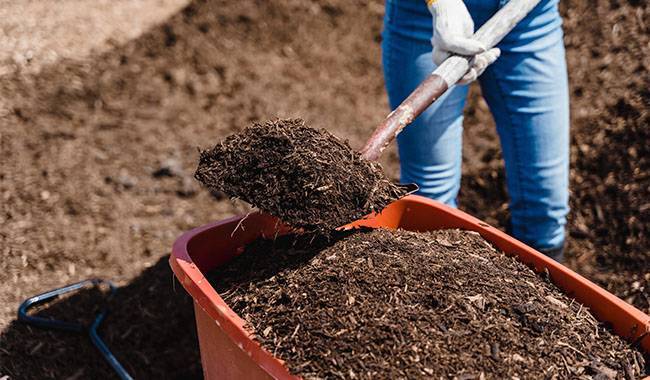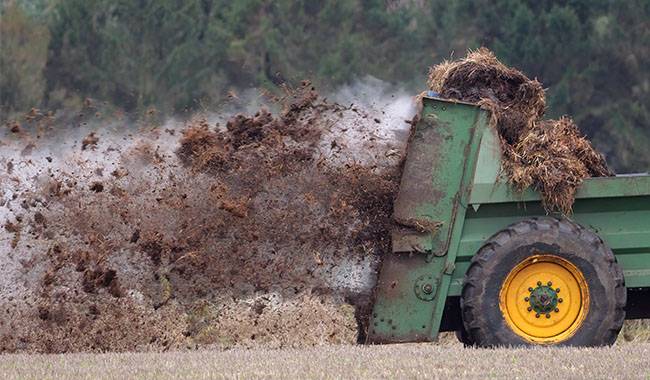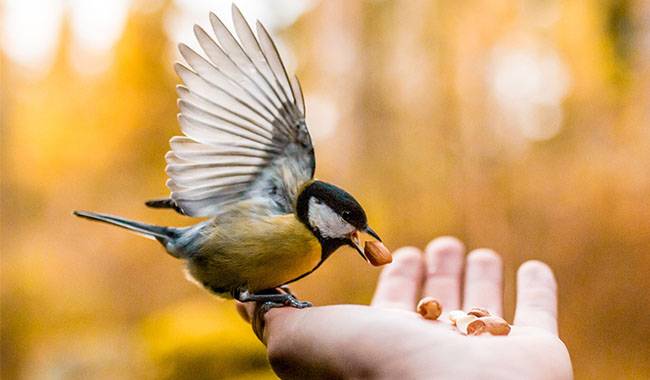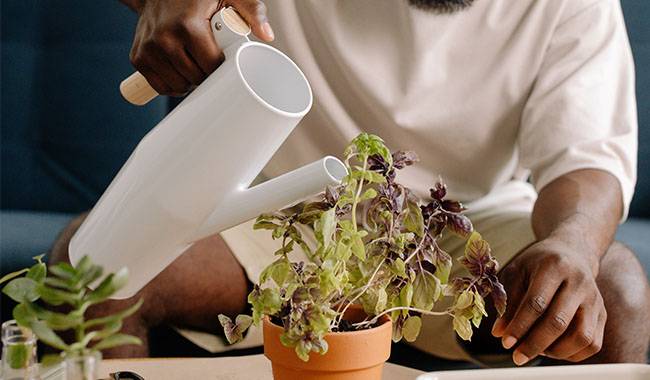
Chicken manure is considered one of the most valuable organic fertilizers. Use it properly, it always helps to obtain high yields and is environmentally friendly. However, it is important to know that not all crops can benefit from chicken manure fertilization.
Even those plants that are happy with it can suffer greatly if the wrong dosage or application method is incorrect.
For more information on how to apply chicken manure in planting raised beds and gardens. We will discuss its advantages and disadvantages here.
BENEFITS OF CHICKEN MANURE
When growing plants, it is impossible to grow them without manure. Since they are not available, even in the plants. The size of the leaves decreases, the color and size of the flowers diminish, the root system becomes weaker and, therefore, the harvest is low.
In order to sustain a good harvest, it is necessary to systematically “replenish” the soil with nutrients that are consumed by the plants or washed away from the soil.
Chicken manure is one of the most valuable and fastest-performing organic fertilizers, both in terms of its nutrient content and its availability to the plants themselves.
The amount of nutrients contained in manure varies depending on the time of year, the breed and age of the hens, the characteristics of the chickens, and the type of feed. However, chicken manure is superior to other organic fertilizers (except pigeon manure).
Chicken manure contains more phosphorus, nitrogen, potassium, and sulfur than manure from cattle or pigs. By its effect on crop yield, chicken manure exceeds that of manure by a factor of 10. Experts say that chicken manure can be applied at thirty times less than manure.
One of the advantages of manure-based fertilizers is their ability to remain in the soil for a long time (up to 2-3 years). It does not decompose quickly and is washed away.
When chicken manure is properly applied, the soil in gardens and vegetable gardens is enriched with necessary nutrients and becomes more moist and friable.
Plants get extra nutrients, develop faster, and are less susceptible to disease and pest “attacks”. There is an opportunity to harvest earlier and in greater quantities.
The initial effects of this fertilization can be seen a week after the application of a poultry manure-based fertilizer. At least the leaf layer will have a richer color.
UNDESIRABLE PROPERTIES OF CHICKEN MANURE
Fresh chicken manure can have unpleasant and even dangerous properties. It contains large amounts of worm eggs, insect larvae and eggs, pathogens of infectious diseases (staphylococcus, salmonella), and seeds of weeds.
Beds fertilized with manure will actively attract onion and carrot flies. It is in this moist “aromatic” soil that these small insects lay their eggs.
The major part of chicken manure nitrogen is in the form of uric acid, whose high levels in the soil retard the growth of seedlings and young plants and subsequently lead to the accumulation of nitrates in fruits and vegetables.
For many root crops (carrots, beet, potatoes), the potassium content of the litter is insufficient and needs to be compensated by additional applications of potassium chloride, for example.
Raw manure can have a pungent and unpleasant odor after a few days of storage. During two months of storage, more than half of the nitrogen in raw chicken manure is lost. To avoid this loss, the manure is dried or (in winter) frozen.
TYPES OF CHICKEN MANURE
There is natural manure, litter manure, dried manure, and dried manure, depending on the conditions in which the hens are kept and the way in which the manure is handled.
Natural manure is obtained from hens kept in cages and is removed with a special mechanism or scraper. This manure has a natural moisture content of 60%.
Natural liquid manure with a moisture content of 85% to 98% is produced by flushing the scraper system or diluting the manure with water. The natural type of manure is used to make dry manure, liquid manure, and compost, and is also applied to the soil in its raw form.
Natural liquid manure is stored in special warehouses on the farm and in sealed containers on the farm.
When natural manure is stacked in the open (without peat, straw, or sawdust), it becomes very hot. This leads to a loss of nitrogen, which can reach 50-60% of the total nitrogen content during the 2 months of storage.
In addition, the top layer of the pile dries out, becomes crusty, and develops deep cracks, which increases the loss of nutrients from the surface and deeper layers. The pile is “surrounded” by an unpleasant odor. The environment was polluted.
The manure is taken out of the bedding made of straw, dried peat shavings, and woody sawdust along with the litter in the coop. And if the hens walk outdoors, a layer of soil is used to collect the litter. The moisture content of this type of manure is 15 to 40%.
Dry manure is mainly produced on large farms with caged hens, where the manure is collected on special belts. The moisture content of the dried manure is between 55% and 70%.
Often, farms have additional air drying and produce dry manure with moisture content as low as 25-40%. The dry manure is stored in well-ventilated, enclosed rooms.
Dry manure is a loosely powdered or granular highly concentrated organic fertilizer with a long shelf life.
This dry manure is produced by drying fresh chicken manure in specially equipped units at a flue gas temperature of 1000-1500°F (600 to 800°C). The drying process takes approximately one hour. The moisture content of dry chicken manure is 15-20%.
Dried manure is odorless and virtually free of microorganisms. The decontaminated dried manure is packed in bags. You can buy this manure at garden centers and specialty stores.
In dry manure, the concentration of nutrients is 3 times higher than in raw manure. To obtain 300-350 kg, you need to use 1 ton of fresh manure.
After opening the package, the contents should be stored in a dry place with tightly closed containers. For this purpose, plastic drums or boxes, glass jars, dense moisture-proof bags, and sacks are suitable. Sealed packages will be stored for three years.
CHEMICAL COMPOSITION OF CHICKEN MANURE
At a moisture content of 60%, chicken manure contains approximately:
Nitrogen (N) – 1.8-2.0 %.
Phosphorus oxide (P2O5) – 1.5-1.8 %.
Potassium oxide (K2O) – 0.8-1.0 %.
Calcium oxide (CaO) – 2.4 %.
Magnesium oxide (MgO) – 0.7 %.
Sulfur oxide (SO2) – 0.4 %.
One kilogram of dry matter of manure contains approximately:
Manganese (Mn) – 90-160 mg.
Zinc (Zn) – 65-90 mg.
Cobalt (Co.) – 5-7 mg.
Copper (Cu) – 12-18 mg.
Boron (B) – 50-75 mg.
Iron (Fe) – 450-850 mg.
Dry chicken manure contains:
Organic matter – 80-85%.
Nitrogen (N) – 4,0-6%.
Phosphorus oxide (P2O5) – 3.0-4.0 %.
Potassium oxide (K2O) – 2.0-2.5 %.
Calcium oxide (CaO) – 5.0-7.0 %.
Magnesium oxide (MgO) – 1.5-1.8 %.
According to its chemical composition, chicken manure is a nitrogen and phosphorus fertilizer, and its application should be combined with additional applications of potash (especially for potatoes and carrots).
HOW TO USE CHICKEN MANURE

Pure poultry manure should not be used because of its high uric acid content. To improve the quality and composition of your garden soil, fresh or dried poultry manure can be used in a separate preparation.
Liquid manure
This fertilizer is made from fresh poultry manure in the following manner In a container that can be covered later, fresh chicken manure is placed and watered (1:1).
The solution is left in a warm room for a few days (5-7 days). To improve the fermentation process, the liquid should be stirred daily.
Before you start fertilizing, this “concentrate” is diluted with water 1 liter for every 10 liters of water. Apply it at a rate of 1 liter per 1 square meter. This fertilizer is good to use a few months before planting. After application, the soil should be lightly tilled and watered additionally.
Apply single or multiple applications to different types of plants throughout the season, watering the plants heavily before and after each application. Moist soil will protect the plant roots from contact with the fertilizer and possible burns.
It is necessary to place mulch on the soil or make slight trenches where watering is done so that fertilizer does not remain on the soil surface.
Excessive application of liquid fertilizers can cause rapid greening of plants without producing buds and may result in elevated nitrate levels in the crop. In addition, it must be remembered that liquid fertilizers may contain worm eggs, insect larvae, and pathogens of infectious diseases.
Therefore, this type of fertilizer is not used for vegetable and berry crops, such as strawberries, tomatoes, cucumbers, or “salad” vegetables during the fruiting period.
Composting
Composting of fresh manure is necessary to reduce nitrogen losses during storage.
Allocate a shaded area in the garden for the compost pile that is not flooded. Do not use a pit for composting because water will accumulate in the compost pile during heavy rains.
You can use a side-removable container or box 5×5foot (1.5×1.5m). The bottom layer is covered with peat 12inch (30cm), straw or sawdust is also acceptable.
The top layer should be covered with an 8-12inch (20-30 cm) layer of fresh chicken manure, dried manure, or bedding with manure, and about the same amount of straw, weeds, or grass clippings.
In this way, the pile is “layered”. However, the best quality manure compost can be obtained when only peat and straw are used for mixing. Phosphate powder (2-4% of the compost matter) is often added.
It is also good to add catalytic plants – yarrow, witch hazel, and comfrey – to speed up the decay process. The height of the pile should be 3-5 feet (1-1.5 m).
Compost should be better covered with a black film to reduce the entry of oxygen and the effects of atmospheric precipitation. A good cover will reduce the loss of nitrogen and phosphorus and will certainly reduce the odor of the manure and pollution of the environment.
After about six months, the ready-to-use compost has a reasonable loose structure, a slight alkaline reaction of the environment, and a high content of nutrients easily accessible to plants.
The moisture content is about 70%. Properly treated compost must be free of insect larvae, worm eggs, weed seeds, and must not smell like chicken manure.
Compost can also be used without boxes, especially since this construction is not always decorative for the garden, especially if the garden is small.
The usual compost pile, with a film at its base and a thick layer of peat and straw, then layer after layer of alternating chicken manure and the usual “filler”.
According to experts, regardless of the effectiveness of manure composting, it leads to an unavoidable loss of nutrients and organic matter.
It is convenient to apply compost to the seedbed in spring, before sowing seedlings and planting, or you can spread it on the soil surface and dig it up in late autumn. In the absence of rain, you should water the recultivated soil liberally.
Use dry chicken manure
Experts believe that the best way to store fresh manure is to dry it in the sun. Dried chicken manure, in the form of pellets or powder, diluted with water (1:25), is adhered to for one to three days. Produce a rich watering before and after the application of the manure.
Very large quantities of pellets or powder can be spread around the plants (30-50 g per 1 m2), immediately mixed with the soil, and watered liberally. Care should be taken to ensure that the pellets or powder do not come into contact with the plants or seeds.
Dry manure is the best fertilizer for digging in the fall.
Safety precautions
When handling granular or powdered manure, gloves should be worn and people prone to allergic diseases are advised to use protective goggles and respirators. After finishing work, you should wash your hands with soap and water and wash your face.
AMOUNT OF CHICKEN MANURE TO APPLY
In spring, before planting tomatoes, apply about 5 liters of liquid manure per square meter of the plot. The soil is plowed and watered heavily. Five days later it is ready for planting young seedlings.
Seedbeds for planting greenery are fertilized in autumn. Per square meter four liters of liquid fertilizer.
During the cabbage season, two to three liquid fertilizers are applied under the cabbage. Each plant should receive about one liter of liquid fertilizer and should always be properly watered.
In autumn, under the strawberries, spread dry chicken manure (50 g per 1 m2) between the rows and shovel it up gently. If the weather is dry, it is necessary to irrigate.
WHICH PLANTS ARE NOT SUITABLE FOR CHICKEN MANURE
Soil fertilized with chicken manure is definitely not suitable for many pungent and medicinal herbs.
Those include hyssop, lutea, thyme, sage, rosemary, balsam tansy, lavender, cypress Santolina, thyme, portulaca, and chamomile.
They do not need rich nutrients. This overfeeding leads to atypical growth and a markedly diminished fragrance, which means less essential oils and thus less protection against pests and diseases of the plant.
Totally unsuitable fertilizers, from chicken manure to blueberries, azaleas, rhododendrons, camellias, heathers.







